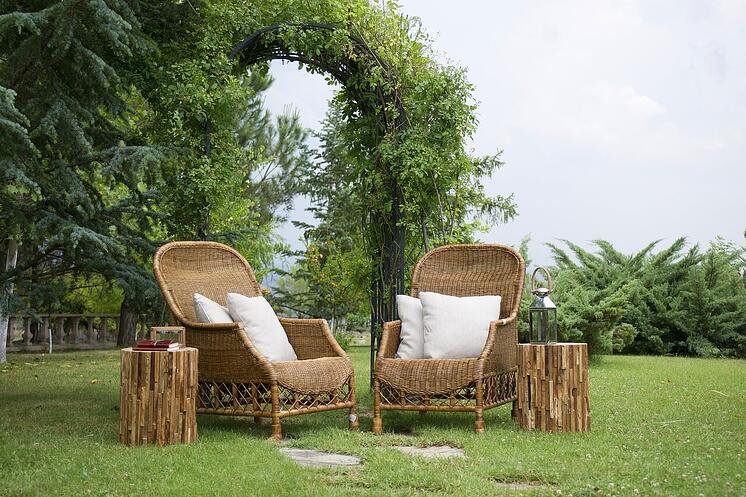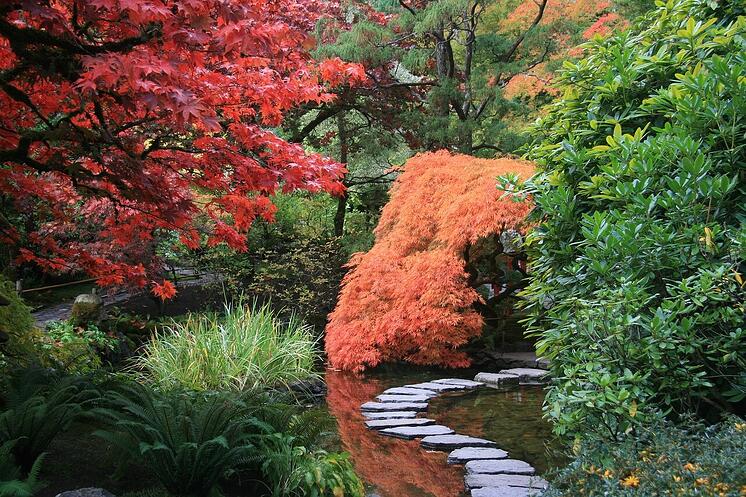Australians love everything Balinese, and you shouldn’t be surprised to learn that this beautiful island is a very popular travel destination. Aussies go to Bali for many different reasons and when they come back they wish to bring it home with them. In Bali, all the resorts and guesthouses, even the cheaper ones, have verdant and luxurious tropical gardens where you can enjoy moments of peace and tranquillity.
But how do the Balinese do it? Can you have a Bali style garden in Australia? Luckily, the answer is yes, if you are willing to invest some time and effort into it, you can definitely bring some of Bali’s tranquillity in your own garden.
A Bali style garden is quite different from a Japanese garden in that it leaves more room for improvisation. However, there are certain aspects that must be taken into consideration if you want to have a good final result:
1. Flowers
.jpg?width=746&name=101%20(9).jpg)
If you have ever been to Bali, you probably noticed that the locals are more inclined to plant flowering plants rather than flower beds. Some of the most common Balinese flowers that can be grown in Australian gardens are: bouganvillea, lotus lillies, jasmine, frangipani, strelitzia or bird of paradise, orchids, peace lilies, and adenium or desert rose.
In Balinese outdoor areas, the most predominant colour is green, so think of the flowers as colourful accents. If you want to your garden to be lush and luxurious, avoid flower beds.
If you want to know what plants you should choose for your climate, read our guide to year-round gardening in Australia.
2. Foliage
.jpg?width=746&name=101%20(7).jpg)
Lush green foliage is quite essential for Balinese style gardens. You can opt for tropical or semi-tropical plants, but whatever you choose, make sure your garden is shaded by different trees.
If you want to get amazing results, you could hire a landscaper or a garden designer, who can offer you valuable advice and help you choose the perfect plants. If, however, you want to make a DIY project of it then these are the most common Balinese trees:
- Bananas - Did you know that these trees can grow even in the more temperate parts of Australia?
- Bamboo - To get that tropical vibe choose the clustering types of bamboo instead of the spreading types.
- Palms - There are many different types of palm trees that can thrive in all sorts of climates. Choose the palms based on your climate.
- Ferns - These plants are extremely versatile and can grow pretty much everywhere.
If you want to learn more about trees and tree maintenance, you can hire an arborist.
3. Natural materials

The Balinese people will mostly use natural materials in their gardens. Whether it’s for furniture or Balinese garden ornaments and decorative objects you should only use manufactured materials such as thatch, stone, bamboo, and timber.
4. Water source
-1.jpg?width=746&name=101%20(2)-1.jpg)
If you want your garden to look but to also feel Balinese, then you must not forget adding water features to it. You can go for a Balinese Buddha fountain or a motif stones fountain.
In many Balinese style gardens water is the focal source, so if you happen to have a swimming pool, you can start building around it.
If your budget allows it, you can also get an outdoor spa, and create the garden around it. This will be a great environment for relaxation.
A more affordable water feature is getting a pond and stone steps leading to it.
5. Shade
.jpg?width=746&name=101%20(5).jpg)
Shade is crucial to a Balinese tropical garden and it can be obtained by planting a lot of trees, but a gazebo is also extremely helpful. In many Balinese gardens, the gazebos are the focal points, as that is where people will gather and socialise. If you are thinking about getting a gazebo, you can hire a handyman or a carpenter.
6. Statues
.jpg?width=746&name=101%20(3).jpg)
The Balinese statues are usually Hindu or Buddhist, but you can also get statues that evoke a sense of calmness and tranquillity. Remember to only get decorations that are made of the aforementioned natural materials.
7. Privacy
.jpg?width=731&name=101%20(6).jpg)
The Bali garden designs should encourage meditation or quiet reflection. It is a well-known fact that the Balinese gardens should also offer a fair amount of privacy. That way, more people can relax in the same space without invading each other’s privacy.
8. Paths

Don’t forget about the access paths. It is important to think about the garden access. The nicest options would be using natural stones or pebbles for the garden paths. If you go for natural stone, consider getting large stones and leave some spaces between them.
If you take these elements into account when planning your Balinese garden, the final result should be exactly what you were looking for. It is important that before you start decorating, you analyze the available space. If your back yard is large, and you budget is limited, you might want to start by creating the Balinese garden in one area. Adding a gazebo is also a great idea for bigger spaces, as it can be a focal point.
If however, your space is limited, you can get more statues or ornaments and make them the centerpieces of the garden.
The best part about having such a garden is that you will not have to travel in order to meditate and to relax. The Bali style garden designs are extremely popular in Australia and you can find almost any types of Balinese plants and statues on the market. Additionally, you can find numerous Bali garden ideas online.
If you need help finding a local gardener or landscaper, then jump on the Bricks + Agent platform and post your job. It's quick, easy, and free!
.jpg?width=746&name=101%20(10).jpg)


